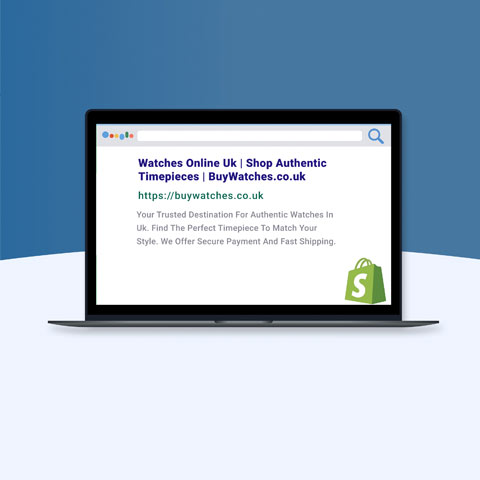Why Brands Need to Embrace Experience-Driven Commerce


The future of commerce. For savvy business leaders understanding what that means is the key to unlocking not just more revenue but a treasure trove of loyal fans of their products and brand. After all, according to data from eMarketer, retail ecommerce sales are expected to reach $7.3 trillion worldwide by 2025, accounting for almost a quarter of total retail sales.
As time machines haven’t been invented (yet) and we can’t just take a sneak-peak at the future of commerce, harnessing the power of the digital dimension seems most promising for any brand that wants to succeed in increasing customer satisfaction and revenue. But ecommerce is no longer about just selling things online.
Brands must now innovate to differentiate themselves from their competitors through the experiences they provide to their customers, online and offline. We have entered into the realm of experience-driven commerce.
But what is experience-driven commerce? And how can technology help you create the experiences that your customers want and love? Let’s find out.
What Is Experience-Driven Commerce?
Experience-driven commerce means delivering a personalized omnichannel experience to customers whenever and wherever they want to engage with your brand throughout their buying journey.
It helps you increase your sales and your customers’ satisfaction by analyzing customer behavior and combining data insights with content to provide the right information or service at every touchpoint.
Traditional ecommerce and brick-and-mortar stores typically only focus on one moment in time or on one particular channel respectively. On the other hand, experience-driven commerce relies on gaining customer insights and anticipating needs, enabling you to combine all channels into one seamless experience, providing a customer with relevant information in the right place and at the right time.
But why has ecommerce evolved to become experience-driven commerce?
Trends Driving Ecommerce Experiences
There are a few key trends that have resulted in the transformation of traditional ecommerce:
The Need to Be Customer-Centric
Today’s consumers are very much in control of their experiences. If they don’t like the experience one brand provides, they can easily replace it with another.
This is because modern consumers have the worlds of shopping, streaming, and dating available at their fingertips thanks to smartphones and IoT devices. These devices have also changed how many consumers view commerce. Browsing, liking, and buying are just a few clicks apart.
One experience tops another, and customers learn to expect ever more service and value through unique and personalized experiences that match their needs and preferences. For brands to keep up with those demands, they must turn to experience-driven commerce.
The Shift Towards Omnichannel
Once upon a time, ecommerce and brick-and-mortar shopping were essentially two different things. Customers could either go into a store or go online. Now, brands must provide an omnichannel experience that interweaves offline and online shopping, for example, enabling customers to browse products in-store, find the product they like on the website, read reviews, look up alternatives, and buy - or any other combination thereof.
The lines (and silos) between different channels are now blurred, especially those between brick-and-mortar stores and websites. And according to Think With Google, an omnichannel strategy can drive an 80% increase in incremental store visits.
Knowing these benefits, who would not want to provide a seamless transition between channels and deliver the same high-quality experience across touchpoints?
The Growth of Personalization
Companies like Amazon and Netflix have changed how consumers perceive personalization. While some consumers may still be apprehensive about sharing their personal information with companies, many are perfectly fine with sharing their information if it gives them a better, more personalized experience in return. For example, product recommendations that match items they liked or purchased previously, or products other people who browsed the same product also looked at. In fact, 26% of consumers want brands to personalize their shopping experiences based on previous purchases.
Why You Need Experience-Driven Commerce
Embracing experience-driven commerce seems necessary to provide the shopping experiences that your customers are looking for. On top, it also provides several competitive and financial benefits that make it appealing to explore.
Make your mark in a competitive market
With the assortment of options consumers have at their disposal, the customer-centric approach of experience-driven commerce enables you to stand out from your competition. By catering to their needs and giving them the experiences they want you set yourself up as a customer experience leader that will retain existing customers and acquire new ones more easily than your competitors.
Deliver a better return on investment
When your customers are happy, they tend to be more loyal to your brand and are likely to spend more every time they purchase, and over the course of their relationship with your brand. By providing the personalized experiences that your customers want, you don’t just make someone happy, you also increase their average order value and overall customer lifetime value.
How to Take Advantage of Experience-Driven Commerce Through a DXP
Brands need the right technology to combine data and content into one cohesive experience to truly leverage the benefits of experience-driven commerce. This includes an omnichannel strategy that interweaves products and content on every touchpoint seamlessly.
To make this happen, your internal teams have to be able to co-create experiences and collaborate efficiently. A digital experience platform (DXP), such as Magnolia, will give your business all of the tools to take advantage of experience-driven commerce.
Headless Commerce Architecture
Magnolia’s composable DXP is built on a headless architecture that enables your brand to deeply integrate various building blocks through APIs, providing your internal teams with a unified platform to create engaging shopping experiences. With this flexible technology stack you can easily connect your CMS to your ecommerce, analytics, and other systems, enabling your merchandisers and marketers to manage content and campaigns, while giving your developers the freedom to work with the front-end frameworks they like.
Learn more about integrating your ecommerce and CMS.
Customer Data Integrations
Magnolia allows you to leverage data and services from external systems, whether that’s an analytics or CRM system or your recommendations engine, helping your teams tailor the customer journey through hyper-personalized experiences.
Content Management System
While Magnolia’s headless architecture provides the foundation for connecting your brand to a wide range of channels, Magnolia also gives your marketers the tools they need to create the content for those channels. Visual editing and the ability to reuse content across channels while creating and managing omnichannel campaigns in one location without developer assistance, means that your marketers can create engaging, effective experiences.
Businesses today need to meet the demands of their customers in ways they have never before. Being able to shop anywhere, at any time, consumers have the power to choose the brands that meet their needs best. As consumers, we all benefit from this plethora of choices. As a business, a digital experience platform enables you to create the experiences that drive customer satisfaction and loyalty as well as your ecommerce sales.
Learn more about how Magnolia can help you embrace experience-driven commerce in our guide: Conquering the Customer Journey.
Want more like this?
Want more like this?
Insight delivered to your inbox
Keep up to date with our free email. Hand picked whitepapers and posts from our blog, as well as exclusive videos and webinar invitations keep our Users one step ahead.
By clicking 'SIGN UP', you agree to our Terms of Use and Privacy Policy


By clicking 'SIGN UP', you agree to our Terms of Use and Privacy Policy
Other content you may be interested in
Categories
Categories

Want more like this?


Want more like this?
Insight delivered to your inbox
Keep up to date with our free email. Hand picked whitepapers and posts from our blog, as well as exclusive videos and webinar invitations keep our Users one step ahead.
By clicking 'SIGN UP', you agree to our Terms of Use and Privacy Policy






![[Research] Apps: The Secret Engine of Ecommerce Growth [Research] Apps: The Secret Engine of Ecommerce Growth](https://images.bizibl.com/sites/default/files/apps-and-web-similarweb-480.jpg)


